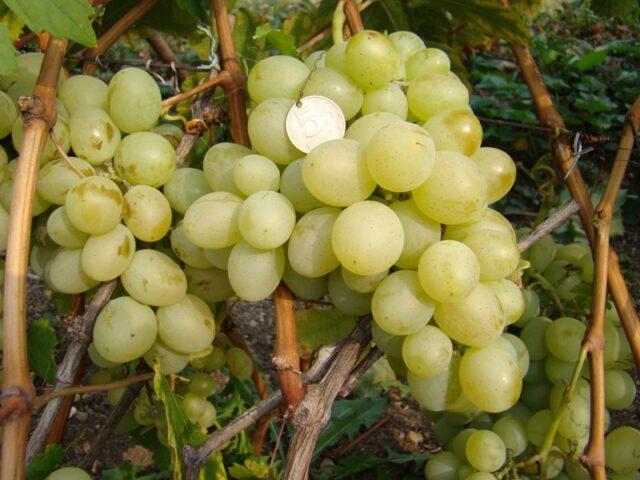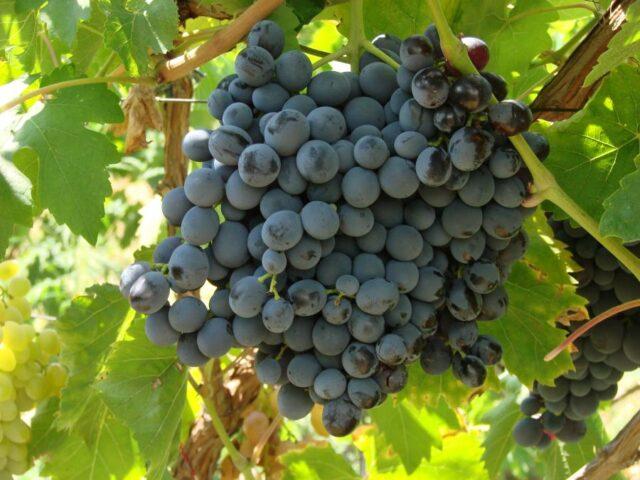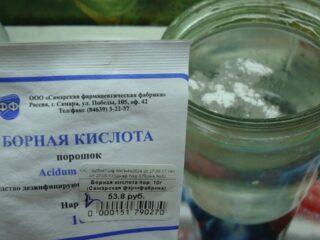Content
- 1 Features of seedless grape varieties
- 2 Benefits of seedless grapes
- 3 The best seedless grape varieties
- 4 Varieties of green (white) seedless grapes
- 5 Seedless red grape varieties
- 6 Varieties of black seedless grapes
- 7 Sweet seedless grape varieties
- 8 Varieties of large seedless grapes
- 9 Seedless grape varieties for the Moscow region and the middle zone
- 10 Conclusion
Seedless grapes are especially popular among gardeners. There are quite a few varieties of sultanas, some of them are intended only for the south, others are suitable for growing in temperate climates.
Features of seedless grape varieties
Seedless grapes, also called sultanas, are represented by varieties in the pulp of which there are no seeds or they do contain them, but remain very small or are in their infancy. It is customary to distinguish four categories:
- first - the total mass of the seeds does not exceed 6 mg;
- second - the berries contain 6-10 mg of seeds;
- third - the seeds occupy 10-14 mg;
- fourth - seed weight is more than 14 mg.
The most valuable varieties are the first and second categories.These grapes are distinguished by increased sugar content and dessert taste of the fruit. Kishmish of the third and fourth categories is not very popular - the seeds in them are small, but too noticeable, the berries themselves are small in size and have a pronounced sourness.
Benefits of seedless grapes
Kishmish has numerous beneficial properties:
- increases immunity and protects against viruses and colds;
- removes toxins and waste from the body;
- improves blood composition;
- has a rejuvenating effect;
- stimulates digestion and prevents constipation;
- improves mood and increases energy.
Kishmish is used in preparing the most delicious juice and soft raisins. Seedless varieties suffer from fungi and pests less often than those that have seeds.
The best seedless grape varieties
Before planting a crop on a site, you need to study photos and descriptions of seedless grape varieties. Among them there are black and white, early and late varieties with high sugar content or light sourness.
Radiant
One of the best types of seedless sultanas is the early-ripening Radiant. The bunches reach 2 kg in weight, the berries themselves are small, on average up to 2 g, but numerous. The shape of the fruit is elongated, the color is light or dark purple depending on the degree of ripeness.
Radiant is highly juicy and has nutmeg notes. Well suited for sale as it easily withstands transportation.

Kishmish Radiant brings harvest on average 125 days after flowering
Century
Mid-ripening sultanas produce fairly large greenish-yellow berries, weighing up to 8 g each.The fruits are collected in clusters up to 900 g, the shape of the clusters is conical. The skin is thin and cannot be felt when eating, the flesh is dense and pleasantly crunchy. Seedless sultanas have a delicate nutmeg flavor and are equally suitable for fresh use and for making raisins or wine.

Century grapes begin to bear fruit 130 days from the start of berry set
Kesha
Early grapes ripen on average in 120 days. Produces dense small clusters up to 450 g in weight, round berries weigh only 4 g each. The fruits of the Kesha variety are very tender, with a lot of juice, with thin skin, greenish or amber-sand in color.

From one bush of Kishmish sultanas you can collect up to 6.5 kg of fruits
Varieties of green (white) seedless grapes
White seedless grapes are considered the sweetest. Varieties from this category are most often consumed fresh and added to fruit desserts.
Arsenyevsky
A variety of large green seedless grapes produces massive bunches of up to 1.6 kg on average 140 days after ovary formation. It has good keeping quality, does not lose its presentation for a long time and can easily withstand transportation. The yellowish berries are large, up to 12 g, do not fall off when ripe, have a sweet taste and juiciness.

Kishmish Arsenyevsky tolerates frosts down to -23 ° C
Neptune
Early grapes ripen 115 days after the buds begin to open. Demonstrates good fruiting, about 95% of the shoots take part in the formation of the harvest.
The clusters are compact, up to 550 g, of medium density. They consist of large, slightly elongated berries weighing up to 3 g with thin white-yellow skin. The pulp of the fruit is pleasant to the taste, fruity, seeds are almost never found, only sometimes minor rudiments are found.

The Neptune variety can be harvested from the beginning of August
White flame
White flame belongs to the category of ultra-early species and ripens in just 90 days. It produces heavy bunches of up to 2.3 kg, individual light berries weigh about 5 g. The grapes taste sweet, with floral notes, the skin is pleasantly crunchy.
The disadvantage of this variety is considered to be its low shelf life. White flame does not tolerate transportation well; it is better to use the crop for your own consumption.

The White Flame variety tolerates frosts down to -20 °C
Seedless red grape varieties
Kishmish is not only white, but also red-violet. Dark varieties are characterized by a slightly tart taste with pronounced sweetness; varieties are often used in making wine.
Kenadis
Frost-resistant seedless grapes are suitable for cultivation in most of Russia. Withstands temperatures down to -30 °C. Fruits with round pink-red berries weighing up to 3 g.
The clusters are medium, cylindrical in shape and of medium density, up to 450 g. The taste of the grapes is similar to the Isabella variety, suitable for fresh consumption and for making juices.

Kishmish Kenadis can be stored for up to four months after collection
Kishmish Saturn
Long, seedless grapes with medium ripening periods yield conical, moderately loose clusters of 350 g each. The berries are reddish in color, elongated, with dense and sweet pulp. Individual fruits weigh on average 4 g.
The variety rarely suffers from fungi and is almost not affected by pests. It is better to grow it in the south, since at temperatures below -23 °C sultanas can freeze.

Kishmish Saturn usually ripens in 130 days
Jupiter
A relatively young variety produces bluish-red berries up to 4 g each. The fruits are collected in clusters weighing 300-600 g. The clusters are neat and dense, with a good fit. The pulp is moderately sweet, without sourness or bitterness, has no seeds, and the aroma of the variety is pronounced nutmeg.
Jupiter tolerates difficult weather conditions well. In warm and sunny summers it ripens in about 125 days.

From one Jupiter sultana bush you can harvest up to 5 kg of harvest
Varieties of black seedless grapes
Black seedless grapes are often used to make red wine and delicious fresh juices. Dark varieties are very healthy - they contain a large amount of resveratrol polyphenol, which prevents the development of cardiovascular diseases.
Black currant
The Black Corinka variety bears small, round, blue-violet fruits with a noticeable waxy coating. The skin is thin, the flesh is aromatic and has good juiciness. The fruits are collected in medium-sized cylindrical clusters.
The variety is characterized by good ripening of shoots and yield within 100 centners per 1 ha. Kishmish is intended for cultivation in the southern regions; it has good immunity, but may suffer from mildew and oidium.

Black currant ripens in an average of 125 days
Beautiful midnight
Beautiful Midnight is an ultra-early hybrid with juicy black or slightly reddish berries. The variety is distinguished by its crunchiness and high sugar content, the taste of the fruit is soft, without pronounced sourness. In the southern regions, the variety ripens at the end of June.
The bunches weigh up to 1.5 kg. They have good shelf life and can be stored for up to three weeks at low temperatures.

The seedless grapes Beautiful Midnight do not tolerate frost well and are not suitable for cultivation in the north
Black Sultan
Seedless grapes with oval black fruits produce clusters of medium density up to 300-700 g. They have crispy pulp with a fruity aroma and a very sweet taste. It is distinguished by good ripening of shoots up to 75%, due to which it produces large and stable yields.
The ripening period of the variety is on average about 120 days. In the southern regions, harvesting can be done in mid-August. Black plume demonstrates good resistance to gray rot and mildew and is characterized by high transportability.

The average weight of the Black Sultan raisin fruit is 2-3 g
Sweet seedless grape varieties
Most varieties of sultanas have a distinct sweet taste without strong sourness. But some varieties are particularly sugary.
Veles
Very early seedless grapes produce large berries weighing up to 5 g; the fruits are oval in shape and pink-red in color. There are no seeds in the pulp, but rudiments may be found. The brushes of the variety are quite large, from 600 g to 2 kg, cone-shaped and moderately loose.
Veles ripens within 100 days from the moment the first leaves appear. Suitable for the middle zone and southern regions.

Seedless grapes Veles can withstand cold temperatures down to -23 °C without shelter
Zaporozhye
Harvest grapes ripen in 115 days and bear ripe fruit by the end of July. Forms large conical clusters of 700-900 g, the berries are fleshy, deep red or dark purple, seedless, up to 3.5 g in weight.The taste of the fruit is harmonious, with light sour notes.
Zaporozhye produces up to 30 kg of yield from an adult bush with sufficient moisture and sunlight. Suitable for fresh use, as well as for preparing drinks or raisins.

Zaporozhye grapes are distinguished by high ripening of the vines up to 95%
Marquis
The popular sultana with medium-density clusters of about 600 g bears oval amber berries weighing up to 5 g. It has a pleasant taste with a light strawberry aroma. It usually ripens by mid-August, and the harvest is consumed fresh or processed to make wine.
The Marquis variety is frost-resistant, but in the middle zone it requires shelter for the winter. It is slightly affected by fungal diseases, but has strong immunity to most ailments.

There are almost no seeds in the sugary Marquise grapes, but rudiments may be present
Varieties of large seedless grapes
Large-fruited sultanas traditionally demonstrate maximum juiciness and a pleasant, balanced taste. There are several seedless varieties with particularly massive berries.
Premier
Large seedless grapes have oval, slightly pointed berries of a beautiful pink-red hue. Individual fruits weigh up to 6 g, and the mass of the clusters is 500-700 g. The harvest does not crumble for a long time and has a long shelf life, the taste is sweet. There are no seeds in the pulp, although their rudimentary remains may be found.
Premier grapes demonstrate average resistance to mildew and almost do not suffer from wasps. For good yields, it is necessary to pay attention to regular antifungal treatments.

When ripe, Premier grapes acquire muscat notes.
Venus
The frost-resistant seedless grape variety tolerates cold temperatures down to -27 °C. Produces small blue-black berries up to 3 g, collected in small clusters with an average weight of 200 g. It has a good taste and pleasant aroma, the skin of the fruit is thick. The variety is valued mainly for its high degree of seedlessness - there are no rudiments or seeds in the pulp at all.

The Venus variety takes up to 120 days to fully ripen.
Black EPA
Black AZOS produces loose large clusters of 700 g each, consisting of large dark purple berries of 6 g each. There are no seeds in the pulp, the grapes are fleshy and very juicy, with thick skin. It is practically not damaged by insects and fungi; one bush brings 7-8 kg of harvest.

The tasting assessment of the Cherny AZOS variety is more than eight points
Seedless grape varieties for the Moscow region and the middle zone
Any grape grows best in the south, where even in winter temperatures remain mild, and in summer sunny days prevail over cloudy ones. Despite this, some varieties are suitable for breeding in the temperate climate of the middle zone.
Kishmish Hungarian
A winter-hardy seedless grape variety with early ripening in 110 days is suitable for the Moscow region. Ripens well even with little summer sun. Tolerates winter cold down to -28 °C; in severe frosts it requires high-quality shelter.
Seedless sultanas have medium sugar content, the fruits are sweet and sour. The brushes weigh on average 400 g, and individual berries reach 12 g in weight.

Hungarian Kishmish can also be found under the name Kishmish 342
Rusbol
Russian seedless grapes ripen within 110 days. The fruits are white, oval, with a golden hue when grown in full sun. The weight of individual berries reaches 2.5 g.The species demonstrates good resistance to fungi and can withstand long-term transportation.

Rusbol grape clusters can reach 1.5 kg in weight
Extra-early Seedless
Small seedless grapes bear small clusters of 300-400 g each, consisting of white-golden small berries up to 1.5 g. The skin of the oblong fruits is thin, the flesh is slightly crunchy with a sweet taste and a slight sour note. The variety can withstand frosts down to -20 °C and tolerates mild winters in the Moscow region, but in severe cold it requires shelter.

Extra-early Seedless acquires a special sweetness after slight ripening
Conclusion
Seedless grapes are suitable for use as dessert, for raisins and for processing in wine making. It differs from ordinary types in its increased juiciness and sweetness. Kishmish can only be propagated vegetatively.








